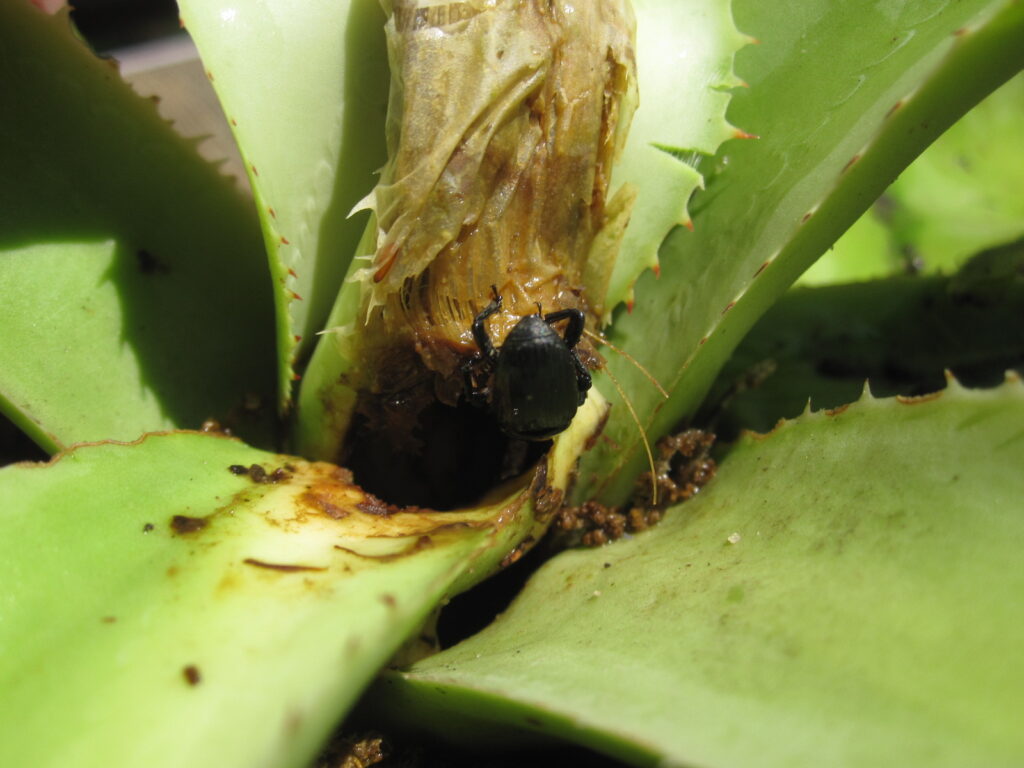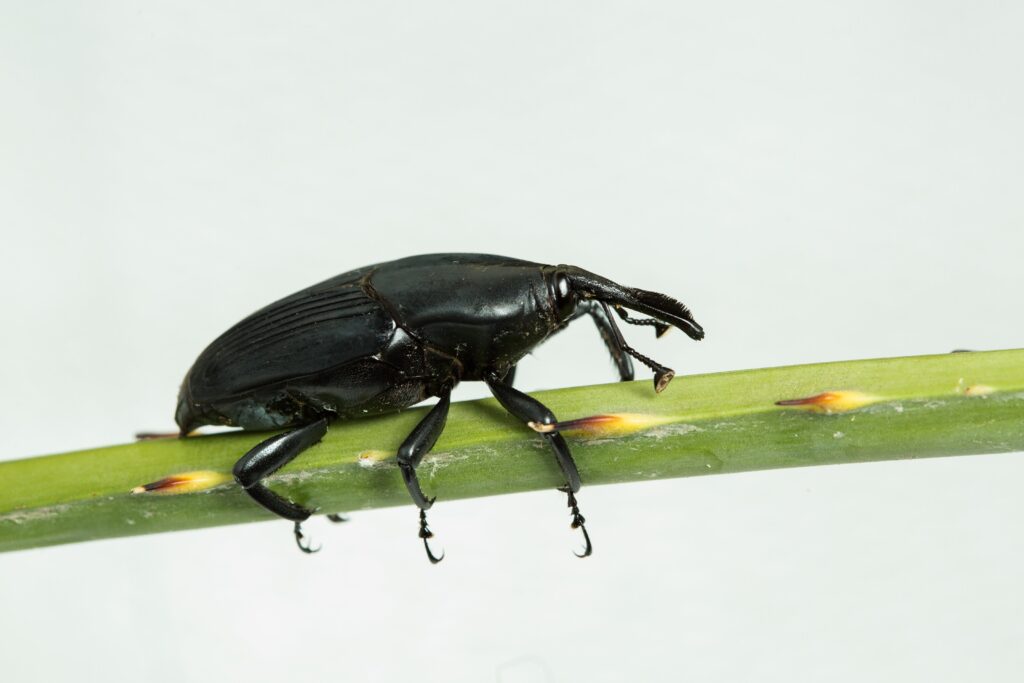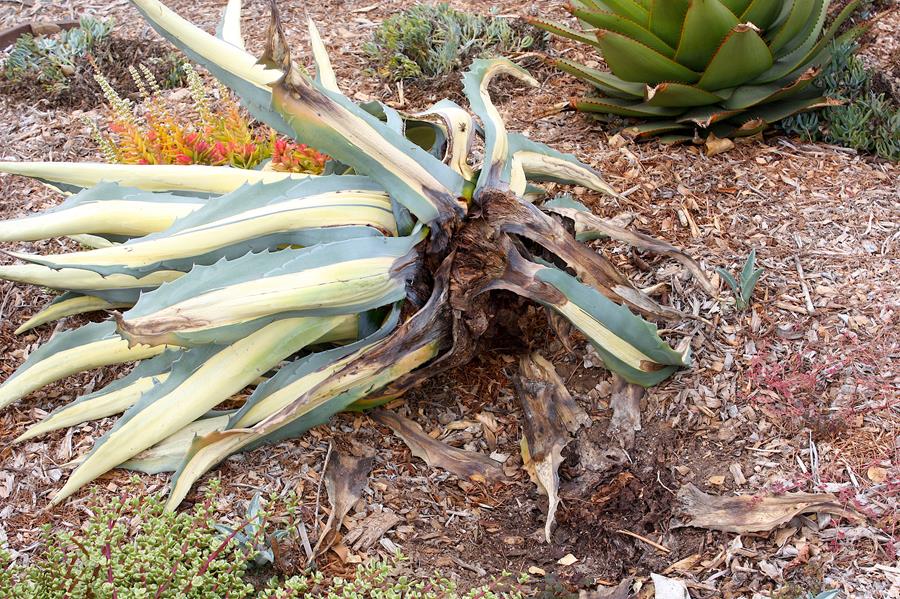Agave Snout Weevil
The agave snout weevil (Scyphophorus acupunctatus), also known as the sisal weevil, feeds on many species of agave and can be especially damaging to the larger species such as century plant (Agave americana) and blue agave (Agave tequilana).
gaves and yuccas are beautiful ornamental plants that are often used to accent xeriscape gardens. For the most part, they do not have serious pest problems. However, there are a few exceptions and learning to recognize their presence is important to maintaining these plants’ health.
Snout weevils are probably the most damaging pests to agaves and yuccas. The agave snout weevil (Scyphophorus acupunctatus), also known as the sisal weevil, feeds on many species of agave and can be especially damaging to the larger species such as century plant (Agave americana) and blue agave (Agave tequilana). It will also feed on other agave species. The agave snout weevil is also a serious pest where blue agave is grown commercially for tequila and in foreign countries where agaves have been introduced as landscape plants. A similar species also colonizes yuccas.
Snout weevils are beetles about 1⁄2 inch (12 mm) in length, brownish-black and have a dull body. Being a weevil, it has a protruding snout and chewing mouthparts. The adult female enters the base of the plant to lay eggs in the spring. These eggs hatch into larvae (grubs) that feed on the succulent core of the plant. Decay microbes also enter through this injury rotting plant tissue causing the plant to collapse. Infested plants soon collapse and die. The larvae have chewing mouthparts and develop in the dying plant and infect other hosts nearby.
Control of the agave snout weevil is difficult. Selecting species that are less susceptible and typically smaller than the century plant is helpful, especially in areas where the problem has occurred previously. Minor infestations can be controlled by removing and discarding the affected plants. With rare or special specimens, chemical prevention using a broad-spectrum insecticide applied in spring is often effective in reducing damage. Diazinon granules were once used to control agave snout weevils, but diazinon is no longer available. Imidacloprid granules (Merit) applied in the early spring are a suitable replacement when pesticides are deemed necessary. But why use a chemical pesticide when an organic alternative is available that will not harm the environment and does not affect the food chain
Weevil Wipeout has proven 95% effective in clinical trials against Scyphophorus acupunctatus.
.THE ISSUE IN NUMBERS
Around 90% of the world’s dates are grown in the NENA region. Nearly 50 million farmers’ livelihoods are affected by the RPW.EUR 480 million worth of date palms are destroyed in the Mediterranean countries each year.
In Egypt in 2022:RPW was detected on 94% of date palm farms.Annual cost of on-going RPW treatment programs is USD 5.7 million. Annual value of lost date palms and associated forgone revenues is up to USD 213 million.
In Saudi Arabia in 2022:RPW was detected on 53% of date palm farms.Annual cost of ongoing RPW treatment programs is USD 34.4 million. Annual value of lost date palms and associated forgone revenues is up to USD 401 million.
Currently, the primary strategy for controlling this pest is through the use of chemical pesticides. Unfortunately, increasing evidence has shown that RPW has a strong resistance to all the commonly used pesticides and is not working. Weevil Wipeout has shown 95% efficacy in clinical trials and is based on entirely bio-friendly ingredients that do not harm the environment and do not harm the food chain


